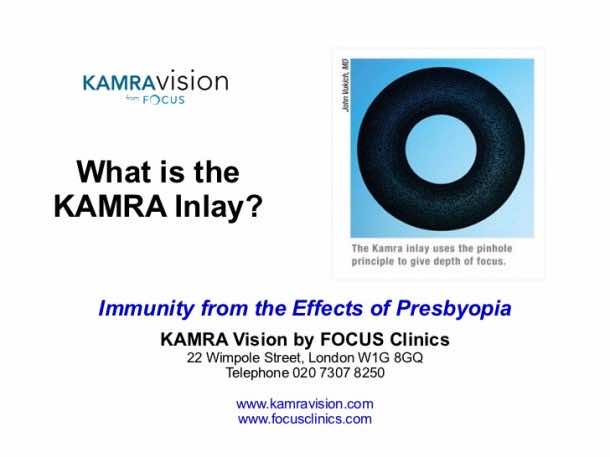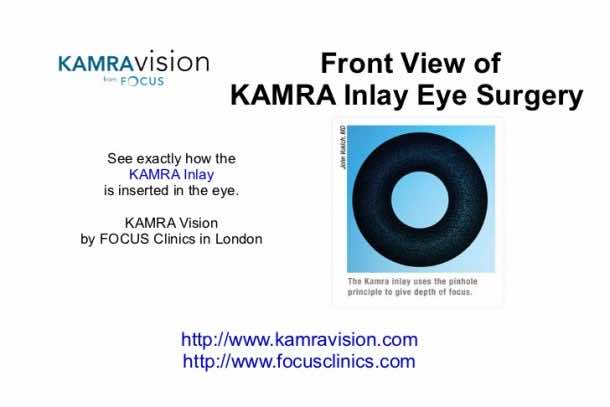After the age of 40 many people experience vision problems. With time, the eye’s natural lens can become too stiff to focus up close. As a result, words and other nearby objects appear blurry. The clinical term for this loss of near vision is presbyopia. A recent, amazing medically advanced treatment called Kamra Inlay is being offered to correct presbyopia.
The Kamra Inlay is a microscopic disc with a diameter of 3.8mm and an opening in the center. It is much smaller than a contact lens and lighter than a grain of salt. Once inserted in the eye, it provides an improved range of focus for both near and intermediate vision without affecting distant vision. When dropped into a small pocket in the cornea covering the front of the eye, the device acts as a camera aperture adjusting so that the viewer can see near and far. The procedure to insert the implant is relatively quick, lasting about 10 minutes and requires a local anesthesia. Insertion method involves slicing the eye open and placing the doughnut shaped inlay into the cornea. 
This procedure might reduce the dependency on glasses or contact lenses. Researchers followed up with patients who’ve had the Kamra inlay and 83% of them can see with 20/40 vision or better, which means that they can probably read the newspaper or drive a vehicle without corrective lenses. As any medical procedure, there are complications from the corneal inlays too, such as haziness. If necessary, the process is reversible. 
Dr. John Vukich, a professor in ophthalmology and vision sciences at the University of Wisconsin, said “Corneal inlays represent a great opportunity to improve vision with a safety net of removability.” The implant has not yet been approved by the US Food and Drug Administration (FDA), but it is available in Europe, Asia, and South America.


